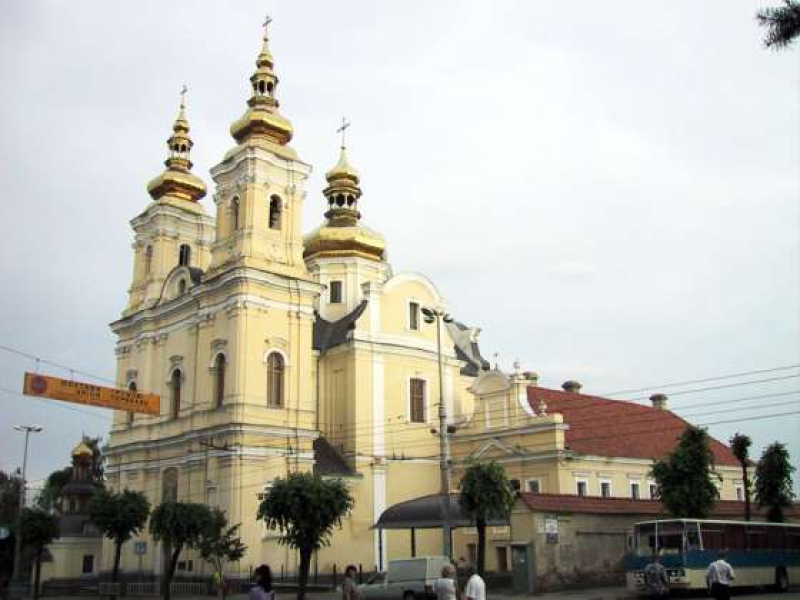|
Time
|
Description of itinerary and objects
|
|
Day 1
|
|
08:00
|
Tranafer to Vinnitsa
|
|
12:00
|
Arrival in Vinnitsa
|
|
13:00-15:00
|
Vinnitsa panoraic city tour including visit to the museum of Pirogov
A lot of places of interest and architectural monuments are situated in Vinnitsa. Unique and perhaps the most ancient place are the remains of medieval complex of defense constructions for the Jesuit and Dominican monasteries. Wooden masterpieces of the beginning of the XVIII century –the churches of Nikolaj (1726) and Yurij (1726), the complex of monastery buildings of the ХVII-XVIII centuries, unique constructions of the ХVІ-ХІХ centuries, preserved till nowadays, will impress any tourist.
An outstanding scientist and public figure, founder of military-field surgery N.I.Pirogov lived on the outskirts of Vinnitsa. His memorial consists of the house of the scientist, estate (a park and a garden) with the area of 16 hectares, family church; where for 125 years the embalmed body of Pirogov rests.
|
|
15:30-17:00
|
Excursion to Hitler’s Headquarter “Werwolf”
Let’s visit one of the most famous Hitler’s headquarters, where he commanded the Eastern front during the WW II Hitler’s choice was made after consultations with astrologers from the Institute of Occult Sciences in Berlin It is a place, where the main field headquarter was set, with an autonomous power supply, artesian well, transit airfield, special detachment and dozens of other buildings, equipped with the latest technologies (still in use today). The underground part of headquarter was 7 stores deep. Today you could see many fragments of concrete blocks with armature. After retreat there were researches and excavations made on this place, however they only left ideas and guesses about the secrets, kept by this unusual object. If you visit this place by day, you will enjoy the calm beauty of divine nature, but if you came there at night – you will see some noiseless shadows of people, going into the secret passes of the dungeon. But be aware – “Wehrwolf” (“Werewolf”) often does not let go those, who come here, fervently protecting its entrusted secrets. Come to this mysterious place – and may be you will manage to know, what the dreadful spirit of werewolf has to say…
|
|
17:30
|
Return to Vinnitsa. Check-in the hotel
|
|
Day 2
|
|
09:00
|
Breakfast at hotel.
Departure to Nemirov.
|
|
11:00-12:00
|
Excursion at Nemorov.
Nemirov, rich for historical heritage, will impress any tourist. It was a witness of many historical events, was burning in the fires of the battles with gentry, and it was a capital of the Sarmate Princedom. For a long time a picturesque town was the estate of the famous family of Pototski. The Duke Boleslav Pototskii was famous for his patronage activity. His granddaughter Maria Pototskaya (Duchess Scherbatova by husband) became the last land-owning lady of Nemirov. Nowadays this outdoor memorial of garden and park architecture impresses all the tourists with its beauty. The two-storied palace, built in the neoclassical style, remained intact. The sanatorium «Avantguard» is located there. Tourists can admire the interiors of the palace, which have been well preserved. All the walls are decorated with paintings of Ukrainian masters.
|
|
13:30-14:30
|
Visit of Pechera village (shrine of counts Pototski, wooden church of the Nativity).
Magnificent park, several outbuildings and a mausoleum tomb - all that remained from the rich manor Pototski-Sveykovskh in Pechera village. The original rectangular layout of the park with majestic linden alley with the four 250 -year-old lime trees, which led from the main gate to the palace, almost completely preserved Park terraces decorated with grottoes and the only surviving sculpture. On the reverse side of the park there is a chapel - mausoleum, built in Neo-Romanesque style by architect Gorodetsky in 1904. In Soviet time it was used as a cinema. Now it is the Church of St. Andrew. Also survived several outbuildings, designed in the beginning.of XX century.
|
|
15:00-16:00
|
Excursion at Tulchin (Pototski palace).
The palace of Stanislav Pototskii is considered to be the best example of Classicism in Ukraine. At the times of Pototski the palace gleamed with luxury and splendor: gilding and sophisticated stucco moulding, grand furniture, walls decorated with the paintings of Rafael and Rembrandt (three paintings of Tulchin are in the Paris Louvre). Famous people of that time (russian poet A.S. Pushkin, Polish poets Stanislav Trembetskij and Yuliush Slovatskij, writer Frantschishek Kovalskij and other) used to visi the palace; the balls held ther.
|
|
16:00-18:00
|
Return to Vinnitsa.
|
|
Day 3
|
|
09:00
|
Breakfast at hotel.
Departure to Lyadova.
|
|
12:00-14:00
|
Excursion to Lyadovskyi Rock Monastery.
Lyadovskyi Assumption rock monastery is situated on steep slopes with high chalky mineral springs. According to the legend, Monastery was founded in 1013 by St.. Antony Pechersky , who was returning at that time from Mount Athos to Kiev . It was a first cave monastery, founded by St. Anthon , and the first Christian monastery in the province. The monastery played an important role in the political life of Ukraine. Thus, in 1649 the abbot of the monastery Paul togather with Hieromonk Nicephorus became the first ambassadors of Hetman Boldan Khmelnitskyi to Moscow Tsar Alexei Mikhailovich..
|
|
17:00-18:00
|
Arrival in Brailov. Excursion to nunnery
Brailov Holy Trinity Nunnery founded in 1635 on the initiative of magnate. Kropivnitskiy In 1740 Volyn governor F. Potocki founded it as a monastery of the Catholic Order of Trinitarians. The monks of this exotic Ukrainian Order specialized in redemption of Christians from Turkish captivity.
|
|
18:00-19:00
|
Return to Vinnitsa.
|
|
Day 4
|
|
09:00
|
Breakfast at hotel .
Transfer to Kiev.
|
|
14:00
|
Arrival in Kiev.
|
|
|
PRICE INCLUDES:
• entrance fees;
• accommodation
• transport services;
• guide(interpreter) services
|










